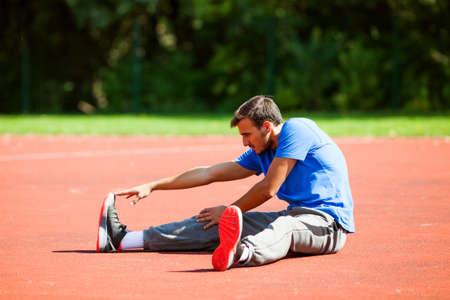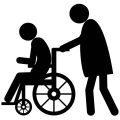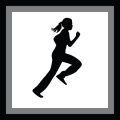1. Understanding the Unique Needs of Young Athletes
Youth athletes aren’t just “smaller adults.” Their bodies and minds are still growing, which means they have unique needs when it comes to injury recovery. When a young athlete gets hurt, physical therapists need to consider more than just the injury itself. Growth plates, bone development, and emotional wellbeing all play a big role in how kids and teens heal and return to play.
Physical Differences Between Youth and Adult Athletes
| Aspect | Youth Athletes | Adult Athletes |
|---|---|---|
| Growth Plates | Still open, making them vulnerable to specific injuries | Closed, so less risk for growth plate injuries |
| Bone Strength | Bones are still developing; more flexible but less dense | Bones fully developed and stronger overall |
| Muscle Development | Muscles are maturing; strength gains mainly from neural adaptation before puberty | Muscles fully matured; strength increases from muscle size and neural changes |
| Injury Patterns | Prone to overuse injuries (like Little League elbow), growth-related pains, and unique fractures | More likely to experience tendon, ligament, or muscle tears due to repetitive stress or trauma |
The Psychological Side of Injury Recovery in Youth Athletes
Sports aren’t just about physical activity for young people—they’re also about building friendships, learning teamwork, and boosting confidence. When an injury sidelines a youth athlete, it can affect their mood, self-esteem, and even their identity. Kids may worry about losing their spot on the team or disappointing coaches and parents. Physical therapists need to recognize these feelings and help young athletes stay motivated during recovery.
The Impact of Sports Injuries on Daily Life
- School: Time away from sports might mean more focus on academics—or struggling with missed classes due to doctor visits.
- Friendships: Team sports often form the center of social life. Being out due to injury can lead to feeling left out.
- Family: Parents may feel anxious or unsure about how hard their child should push during rehab.
- Mental Health: Anxiety and frustration are common after an injury. Support from family, coaches, and therapists is crucial for a positive outlook.
Caring for the Next Generation of Athletes
A tailored approach helps youth athletes not only recover physically but also maintain their love for sports and confidence in themselves. By understanding what makes young athletes different, physical therapists can build programs that fit their stage of growth and support their journey—on the field and beyond.
2. Common Sports Injuries in Youth
Young athletes are full of energy and passion, but their growing bodies can be more vulnerable to certain types of injuries. Understanding the most common sports injuries among youth is crucial for parents, coaches, and physical therapists to provide the right care and prevention strategies. Here’s a closer look at some typical injuries in young athletes, especially those involved in popular American sports like football, basketball, and soccer.
Growth Plate Fractures
Growth plates are areas of developing tissue at the ends of long bones in children and teens. Because these areas are weaker than mature bone, they are more likely to get injured during activities that put stress on the bones, such as jumping or tackling. In football and basketball, growth plate fractures often occur in the wrist or ankle due to falls or awkward landings.
Examples:
- Football: Tackling can lead to growth plate injuries in the shoulder or knee.
- Basketball: Hard landings after jumping can cause fractures near the ankle or wrist.
Overuse Injuries
Overuse injuries happen when repetitive motion puts too much stress on muscles, ligaments, or tendons over time. Unlike sudden injuries, these develop gradually and are often linked to playing one sport year-round without enough rest. Common overuse injuries include stress fractures, tendonitis, and Osgood-Schlatter disease (knee pain).
Examples:
- Soccer: Repeated kicking and running can lead to shin splints or knee pain.
- Basketball: Constant jumping may result in patellar tendonitis (“jumper’s knee”).
- Baseball: Pitchers often experience elbow pain from repeated throwing.
Concussions
A concussion is a type of traumatic brain injury caused by a bump or blow to the head. Youth athletes in contact sports like football and soccer are at higher risk. Symptoms can include headache, dizziness, confusion, and sometimes loss of consciousness. It’s important for adults to recognize these signs early so kids can get proper medical attention.
Examples:
- Football: Tackles and collisions increase concussion risks.
- Soccer: Heading the ball or accidental clashes between players can cause head injuries.
- Basketball: Accidental elbows or falls may also lead to concussions.
Main Types of Youth Sports Injuries by Sport
| Sport | Common Injury Type | Description |
|---|---|---|
| Football | Concussion, Growth Plate Fracture | Tackles and high-impact plays increase risk |
| Basketball | Ankle Sprain, Growth Plate Fracture, Overuse Knee Injury | Jumping and quick direction changes stress joints |
| Soccer | Knee Pain (Osgood-Schlatter), Concussion, Shin Splints | Kicking and running lead to overuse; head impacts possible |
| Baseball/Softball | Pitchers Elbow (Overuse), Shoulder Strain | Repetitive throwing motions cause wear on joints |
The Importance of Early Recognition and Care
If a young athlete complains about persistent pain, swelling, or any symptoms after an injury (like headaches or confusion), it’s important to take them seriously. Quick action not only speeds up recovery but also helps prevent long-term problems that could affect their future in sports. Physical therapy tailored for kids helps address their unique needs as they heal and grow stronger for the next season.
![]()
3. Personalized PT Approaches for Recovery
When working with youth athletes, one-size-fits-all rehab just doesn’t cut it. Kids and teens are still growing, so their bodies respond to injuries and therapy differently than adults. That’s why physical therapy (PT) for young athletes needs to be personalized—focusing on evidence-based, age-appropriate strategies that help them heal, grow strong, and get back in the game safely.
Age-Appropriate Rehabilitation Strategies
Youth athletes heal at different rates depending on their age, stage of development, and type of injury. Here’s how PT is tailored for younger patients:
| Age Group | Key Considerations | Common Strategies |
|---|---|---|
| Children (6-12 years) | Growth plates still open Sensitive to overuse |
Fun, game-based exercises Low resistance, high repetition Focus on balance and coordination |
| Teens (13-18 years) | Rapid growth spurts Increased risk of muscle imbalances |
Progressive strength training Plyometric drills Education on body mechanics |
Tailored Exercise Programs
No two injuries—or athletes—are exactly alike. PTs develop customized exercise plans that take into account the athlete’s sport, position, skill level, and personal goals. Some key components include:
- Strengthening Weak Areas: Targeting muscles that support injured joints or tendons to prevent re-injury.
- Flexibility Training: Gentle stretching to restore normal range of motion without overstressing healing tissues.
- Aerobic Conditioning: Maintaining cardiovascular fitness with safe activities like swimming or cycling during recovery.
Example: Return-to-Sport Progression
| Phase | Main Goals | Sample Activities |
|---|---|---|
| Early Rehab | Pain management Reduce swelling |
Icing Gentle range-of-motion Isometric exercises |
| Mid Rehab | Restore strength Improve flexibility |
Resistance bands Core stability work Aquatic therapy |
| Late Rehab/Return to Sport | Smooth transition back to play Mental readiness |
Plyometrics Sprint drills Shooting/passing practice (if applicable) |
Functional Movement Training
Young athletes need to move well before they move fast. PTs use functional movement screening to spot weaknesses or imbalances that could lead to future injuries. Training includes:
- Bilateral Movements: Teaching athletes to use both sides of their body equally (think: single-leg hops, lunges).
- Agility Drills: Ladder runs, cone drills, and shuttle runs that mimic real game movements.
- Lifting Mechanics: Safe lifting techniques for weight training in older teens.
Youth Athlete Functional Movement Checklist
| Movement Pattern | Description | Why It Matters |
|---|---|---|
| Squat Form | Knees over toes, chest up, heels down | Avoids knee/ankle injuries in sports like basketball or soccer |
| Lunge Stability | Knee tracking over ankle, torso upright | Tackles hip and core weakness that can lead to strains |
| Plyometric Landing | Bending knees/hips when landing from a jump | Cuts ACL injury risk in jumping sports like volleyball or gymnastics |
Sport-Specific Modifications
Youth football players have different rehab needs than swimmers or dancers. PTs adapt recovery programs based on the demands of each sport—like focusing on shoulder stability for baseball pitchers or ankle strength for soccer players. Communication between therapists, coaches, and families is key to make sure the athlete returns ready for their specific activity—not just “cleared” on paper.
The Bottom Line: Every Youth Athlete Is Unique!
A personalized PT approach means every young athlete gets a plan designed just for them—supporting safe recovery now and building healthy habits for the future.
4. The Role of Family, Coaches, and School in Recovery
When it comes to helping youth athletes recover from injuries, teamwork is everything. Physical therapists (PTs) don’t work alone—instead, they rely on strong support from parents, coaches, and school staff to help young athletes heal fully and safely. Each person plays a unique role, and together, they create an environment where recovery isn’t just about the body, but also about motivation, emotional health, and a smooth return to sports.
The Power of Teamwork
Every member of a youth athlete’s support system brings something special to the table. When everyone communicates and works together, the athlete feels more supported and confident during the recovery process. Here’s how each group can help:
| Role | How They Support Recovery |
|---|---|
| Physical Therapists | Design personalized rehab programs, monitor progress, educate families on safe exercises |
| Parents & Guardians | Provide daily encouragement, ensure exercises are done at home, help manage stress or frustration |
| Coaches | Adjust training plans, encourage safe participation, communicate with PTs about progress |
| School Staff (Teachers/Counselors) | Offer academic accommodations if needed, check in on emotional well-being, help with scheduling therapy sessions |
Why Open Communication Matters
If PTs share updates with parents and coaches, and schools know what’s going on, everyone stays on the same page. This prevents misunderstandings—like returning to play too soon—or missed therapy appointments. It also helps spot any mental health challenges early so that support can be provided quickly.
Motivation & Emotional Health
Youth athletes sometimes feel left out or discouraged during recovery. Families and coaches can keep spirits up by celebrating small wins and reminding athletes of their progress. Schools can make sure students stay included in team activities or social events whenever possible.
Safe Return to Play
A safe return isn’t just about physical readiness. By working as a team, PTs, parents, coaches, and school staff can watch for signs that an athlete is truly ready—physically and emotionally—to get back in the game. This collaborative approach reduces the risk of re-injury and builds lifelong healthy habits for young athletes.
5. Promoting Long-Term Wellness and Injury Prevention
Empowering Young Athletes for a Healthy Future
Helping youth athletes recover from injuries is only part of the journey. To set them up for long-term success, physical therapists and coaches should focus on education and building healthy habits that reduce the risk of future injuries. This includes teaching proper warm-up routines, managing training loads, encouraging good nutrition, and raising awareness about mental health.
Key Proactive Measures for Youth Athletes
| Area | Practical Tips |
|---|---|
| Warm-Ups | Start every practice or game with dynamic stretches like high knees, butt kicks, and arm circles to activate muscles and improve flexibility. |
| Training Loads | Gradually increase intensity and duration of workouts. Avoid back-to-back intense sessions and ensure at least one full rest day each week. |
| Nutrition | Encourage balanced meals with lean proteins, whole grains, fruits, veggies, and plenty of water. Remind athletes not to skip meals, especially around training times. |
| Mental Health | Promote open conversations about stress and performance anxiety. Teach coping skills like deep breathing or mindfulness, and let athletes know it’s okay to ask for help. |
The Role of Education in Resilience Building
Youth athletes often model their habits after adults. When coaches and PTs take time to explain why certain exercises or routines matter, young players are more likely to stick with them. For example, explaining how a proper warm-up prevents muscle strains makes the habit more meaningful. Regular workshops or team meetings can reinforce these messages.
Sample Weekly Wellness Routine for Youth Athletes
| Day | Main Focus | Key Activities |
|---|---|---|
| Monday | Dynamic Warm-Up & Skill Drills | 10-minute warm-up + sport-specific drills + light strength work |
| Wednesday | Mental Health Check-In & Light Practice | Group discussion on stress management + easy workout + stretching session |
| Friday | Nutritional Guidance & Game Prep | Short nutrition talk + fueling tips for game days + pre-game routines practice |
| Sunday | Rest & Recovery Day | No structured training; focus on hydration, sleep, and family time. |
Encouraging a Supportive Environment
Athletes thrive when surrounded by positive role models—coaches who prioritize player wellness, parents who understand recovery needs, and teammates who look out for each other. By making wellness and injury prevention an everyday conversation, we help young athletes build resilience that lasts both on and off the field.


